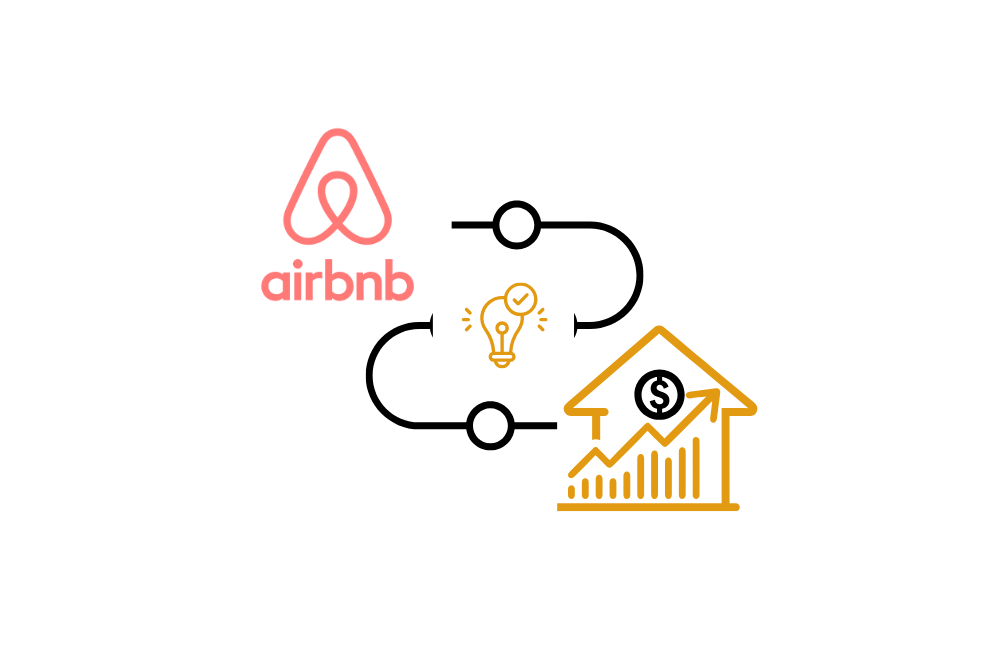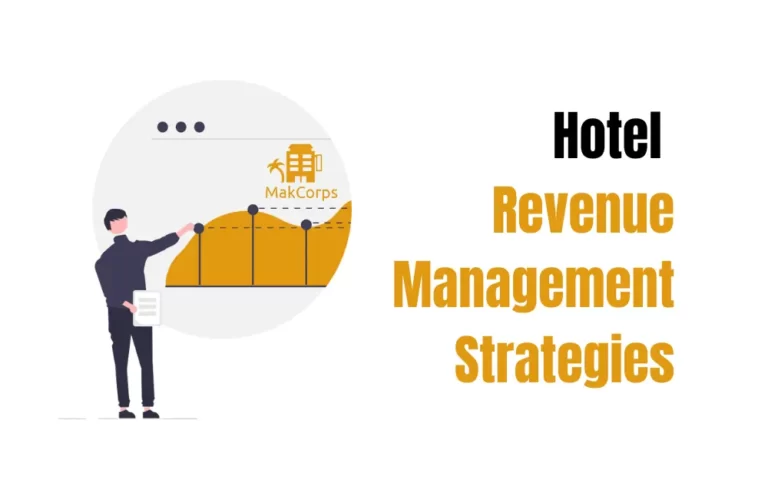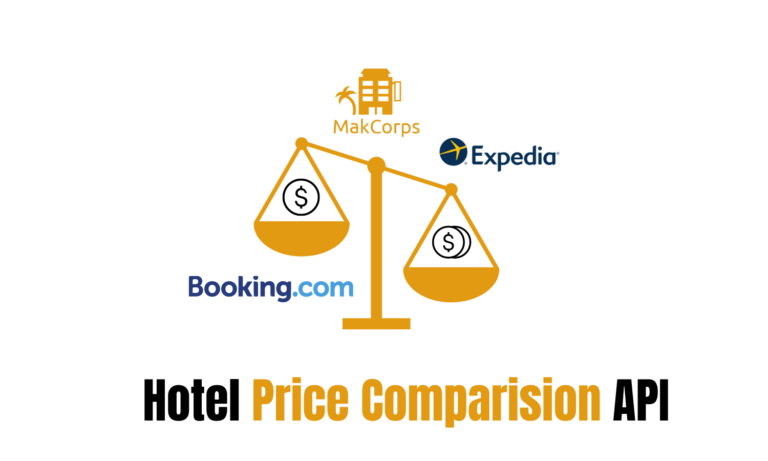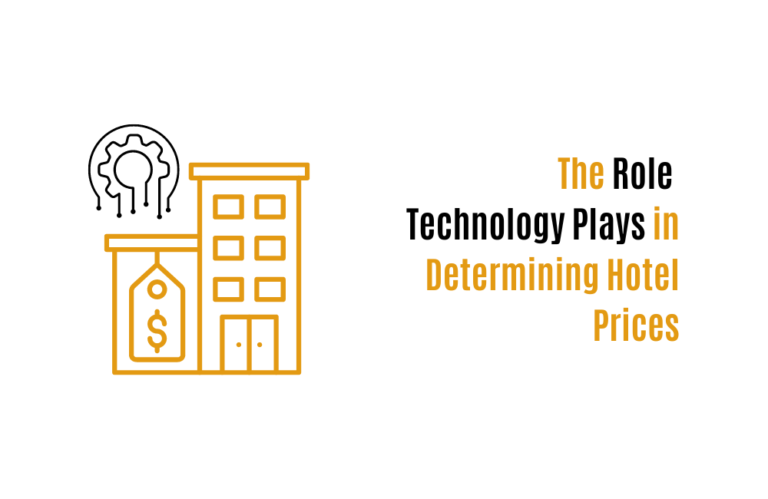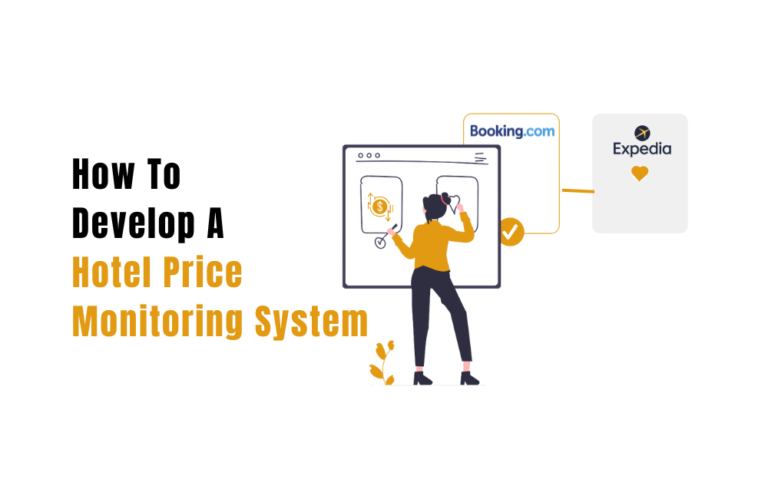Airbnb Pricing Strategy and Tools to Maximize Profit
Setting the right price is crucial for Airbnb hosts aiming to boost profits and keep their properties booked.
AirDNA predicted a 5.9% rise in demand by the end of 2024 and a 6.8% increase in 2025
It’s clear that more travelers are choosing short-term rentals. This growth means hosts need to fine-tune their pricing to stand out in a crowded market.
Airbnb offers a Smart Pricing Tool to help hosts set rates. However, some users in the Airbnb community have disclosed that they don’t find it reliable.
Finding the sweet spot between competitive rates and maximum revenue is hard. If you set prices too high, potential guests might look and book elsewhere. Or if you set them too low, you could miss out on earnings. To tackle this, various tools and strategies have emerged to help hosts optimize their pricing.
In this article, we will discuss everything from effective pricing strategies to a step-by-step approach to setting prices for your property to maximize profits.
Let’s start with popular Airbnb pricing models.
Popular Airbnb Pricing Models
Choosing the right Airbnb pricing model is crucial for maximizing profit and maintaining occupancy. Each method has its pros and cons.
Let’s break it down:
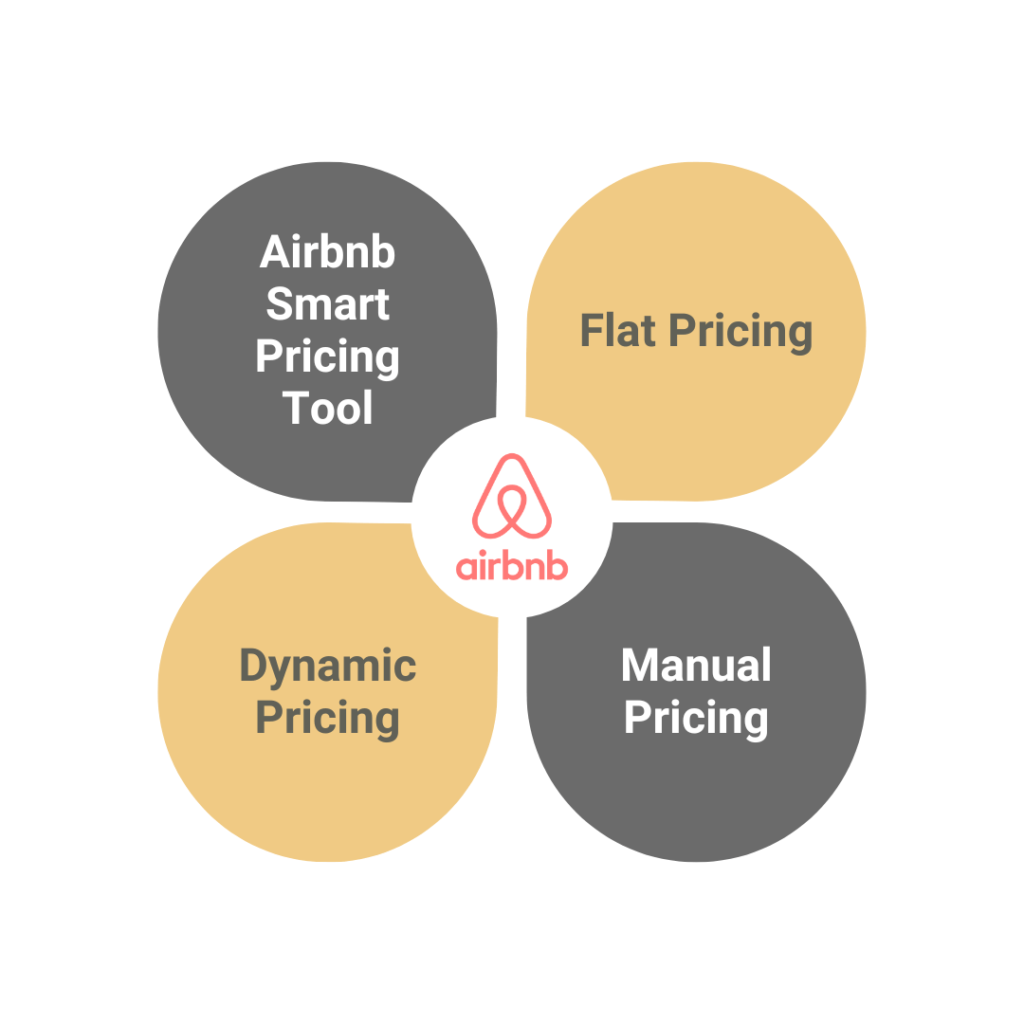
1. Airbnb Smart Pricing
Airbnb’s Smart Pricing adjusts your rates automatically based on market trends, seasonality, and demand. While it’s convenient and easy to use, many hosts criticize it for undervaluing their properties. They say it often sets prices lower than the market average. If profitability is your priority, this tool might not offer the precision needed to reflect your property’s true value.
2. Flat Pricing
Flat pricing is straightforward. You can set a fixed nightly rate regardless of season or demand. This approach is simple and ideal for new hosts. However, it’s not always profitable. Even if you set flat pricing by doing competitor research and calculating operational costs, and find it profitable for a few months. But, being profitable in the long run is not possible with flat pricing. For instance, in peak periods or local events, you can miss out on higher revenue during high-demand times or face low occupancy during slower seasons.
3. Dynamic Pricing
Dynamic pricing uses real-time data to adjust rates based on factors like seasonality, local events, and demand. Many hotel dynamic pricing software are available in the market that will help you excel at automating this strategy. These tools help hosts maximize profits by raising rates during peak seasons and lowering them when demand drops.
4. Manual Pricing
Manual pricing gives you full control to adjust rates for specific scenarios, such as major events or sudden surges in demand. Even though it ensures maximum customization, it’s also time-consuming and may require constant monitoring to stay competitive. This method works best for experienced hosts familiar with their market.
Which Model Should You Choose?
The ideal model depends on your goals, time availability, and property type. For hands-off management, dynamic pricing tools offer convenience. But if you prefer a personal touch, manual pricing or a combination of strategies can also work.
Steps to Set Profitable Airbnb Prices
Creating a successful Airbnb pricing strategy involves balancing your costs with competitive rates to attract guests and boost revenue.
Here’s a detailed step-by-step guide:
Step 1: Calculate Your Costs
The foundation of profitable pricing starts with knowing your expenses. Here is how to calculate your expenses.
- Identify all costs: Include rent or mortgage payments, cleaning fees, maintenance, utilities, Airbnb’s host fee (3% split fee or 12-14% host-only fee), and additional expenses like taxes or insurance.
- Find your break-even point: Divide your total monthly costs by 30 to calculate the minimum nightly rate needed to cover expenses.
- Add a profit margin: Incorporate 15%-30% above the break-even point to secure profitability. This ensures you’re not just covering costs but earning on each booking.
Step 2: Research Competitors Pricing
Understanding your local market gives you an edge. Here is how you can do it:-
- Find similar listings: Use tools like Makcorps Hotel Price Comparison API to identify comparable properties in your area based on location. Check out the response below:-
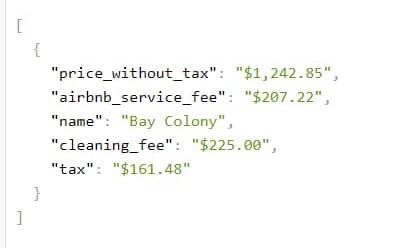
- Analyze price trends: By using the Makcorps hotel price comparison API, you can get competitor pricing from 200+ OTAs in a single get request. This API provides hotel price comparison data in JSON format. This won’t only allow you to compare the pricing of hotels and Airbnb in your location but also allows you to analyze prices during high and low seasons, as well as event-specific price changes.
To learn, how you can extract Airbnb properties and hotel price comparison data using MakCorps API. Check out the video:
Step 3: Set a Base Price
Your base price serves as the starting point for your pricing strategy. After calculating costs and analyzing pricing trends, you will get an idea of what should be the price of your property. But, if you want to ensure both competitiveness and profitability, it’s important to set a base price.
Here is how you can do it-
- Use this formula: Base price = break-even rate + competitive adjustment + profit margin.
- Adjust for amenities: If your property has premium features like pools, hot tubs, or proximity to popular attractions. You can add that cost to the base price. Many guests are often willing to pay more for standout features or unique selling points like scenic views or luxury interiors.
Step 4: Adjust Prices Using a Pricing Strategy
The pricing strategy that leads to sales is dynamic, not fixed. It should evolve in response to changes in demand and strategic shifts. Select a pricing strategy that aligns well with your business model and the dynamics of your market. We have detailed these strategies in the following section, which you can easily access by clicking here. This approach ensures that your pricing remains competitive and responsive to market conditions.
Step 5: Monitor and Optimize Regularly
Setting prices is not a one-time task. Your pricing strategy needs regular fine-tuning to stay effective. Here is how you can do it-
- Track performance metrics: Keep an eye on occupancy rates, average nightly rates, and revenue per available rental (RevPAR). These indicators show how your pricing is working.
- Test new rates: Experiment with small adjustments to see how they impact bookings. For example, increase prices slightly during weekends or local events and track guest responses.
- Stay flexible: Monitor competitor prices and market trends to make real-time adjustments so that you remain competitive and profitable.
By following these steps, you’ll be able to set up pricing effectively for your Airbnb properties that balance affordability for guests with profitability for you. A thoughtful, data-driven approach will not only increase bookings but also maximize your long-term revenue.
Effective Airbnb Pricing Strategies to Maximize Revenue
These are some of the most effective pricing strategies you can implement right now.
Seasonal and Weekend Adjustments:
Seasonality and weekends play a massive role in pricing. Guests expect to pay more during high-demand periods like summer holidays, ski season, or long weekends. Adjust your rates accordingly to capture this demand and maximize revenue.
For example, if you’re hosting in Aspen, Colorado, increase rates during winter for ski enthusiasts. Similarly, adjust prices for weekend stays to attract short-term travelers looking for a quick getaway.
Pro Tip: Undoubtedly, you can charge more during busy seasons, but to get more bookings, you need to monitor hotel prices and similar properties nearby. Guests care about value—if they see a similar place in the same area for less, they’ll book that instead. Stay competitive, and you’ll stay booked!
Last-Minute Discounts:
When dates are left unbooked check-in is just a few days away. You can offer last-minute discounts to fill the gap. A standard reduction of 15–20% for these nights can attract spontaneous travelers and keep your occupancy high.
This tactic works especially well in urban areas, where usually business travelers come and seek discounts.
Short Gaps Between Bookings:
Single-night gaps between bookings are often tricky to fill. Sometimes, offering a small discount (10-20%) for these nights can help attract guests and reduce missed income. For example, if you have a one-night gap between two weekend stays, lowering the rate slightly might encourage someone to extend their trip or book a last-minute stay.
Long-Term Stay Incentives
With the rise of remote work, digital nomads are seeking longer stays that offer convenience and affordability. Offering discounts for weekly or monthly bookings can attract these high-value guests. For example, a 10% discount for weeklong stays or a 25% discount for monthlong stays can make your property a top choice for remote workers.
Longer bookings also reduce turnover, cleaning costs, and the hassle of managing frequent check-ins.
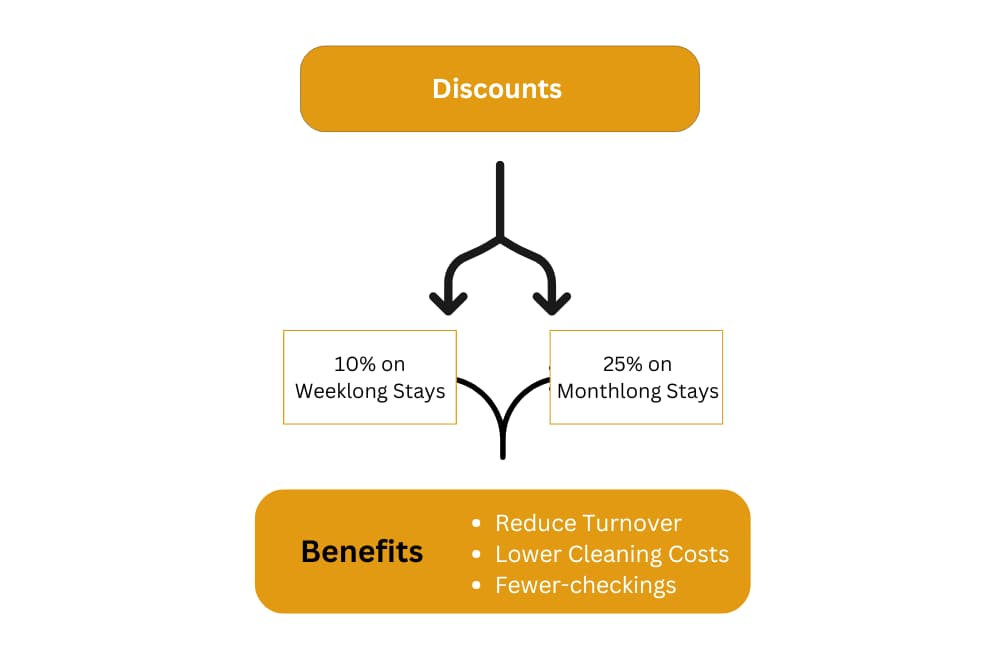
Promotional Pricing
During slow seasons, promotional pricing can make your listing stand out. Offering discounts during off-peak periods not only attracts bargain hunters but also increases visibility on Airbnb’s search algorithm.
For example, a midweek discount of 15% during the fall in Sedona, Arizona, when tourism slows down, can help draw in hikers and adventurers looking for deals.
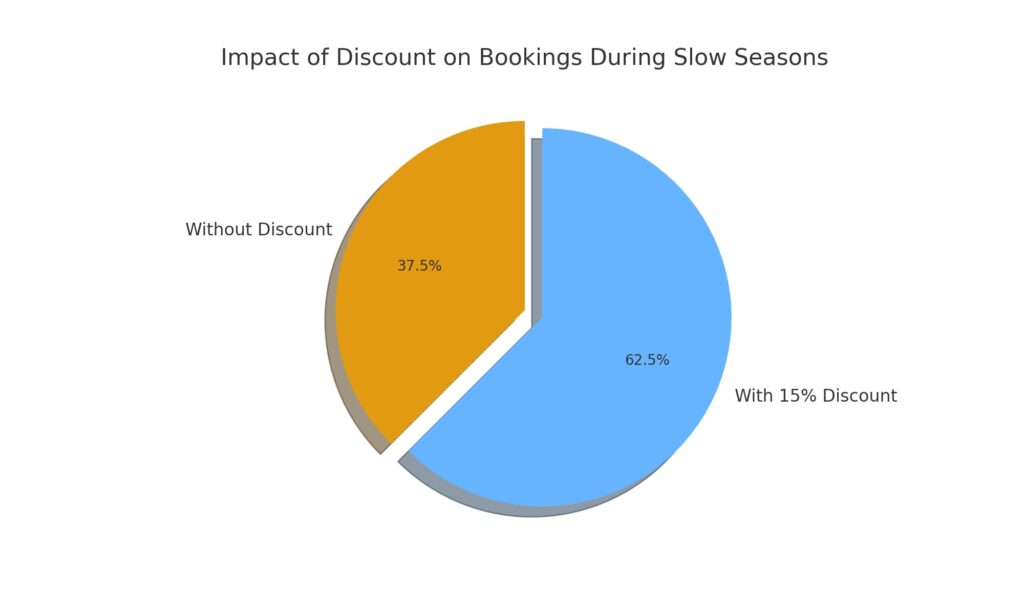
Event-Based Pricing
Major events are golden opportunities to charge higher rates. Festivals, conferences, concerts, and sporting events often attract large crowds, creating a high demand for accommodation.
For instance: During the Albuquerque International Balloon Fiesta in New Mexico, Airbnb hosts often double their rates because of the surge in travelers. Highlight the proximity of your property to event venues in your listing to attract these guests.
Pro Tip: Check local event calendars regularly, monitor accommodation pricing in your location (it should be near to the event), and adjust your prices while being competitive and increasing profitability.
Loyalty Discounts
Loyal guests are your best customers. Offering discounts or perks (like free early check-in or a complimentary bottle of wine or their favorite snacks) to returning visitors can foster long-term relationships and positive reviews. These perks not only encourage repeat bookings but also build trust and goodwill.
Flexible Cancellation Incentives
Many travelers value flexibility. By offering two pricing tiers—a higher rate for flexible cancellations and a lower rate for stricter policies. You can attract guests willing to pay a premium for peace of mind.
For hosts, flexible policies can lead to increased bookings and better calendar utilization, even if some cancellations occur. The trade-off? Higher revenue—even if a booking gets canceled, you still get to keep a portion of the earnings.
Multi-Night Stay Discounts
Incentivizing guests to book longer stays can help reduce turnover and lower cleaning costs. A 5% discount for bookings over three nights or a 10% discount for weeklong stays can motivate guests to extend their visits. This also minimizes vacant nights, maximizing your revenue potential.
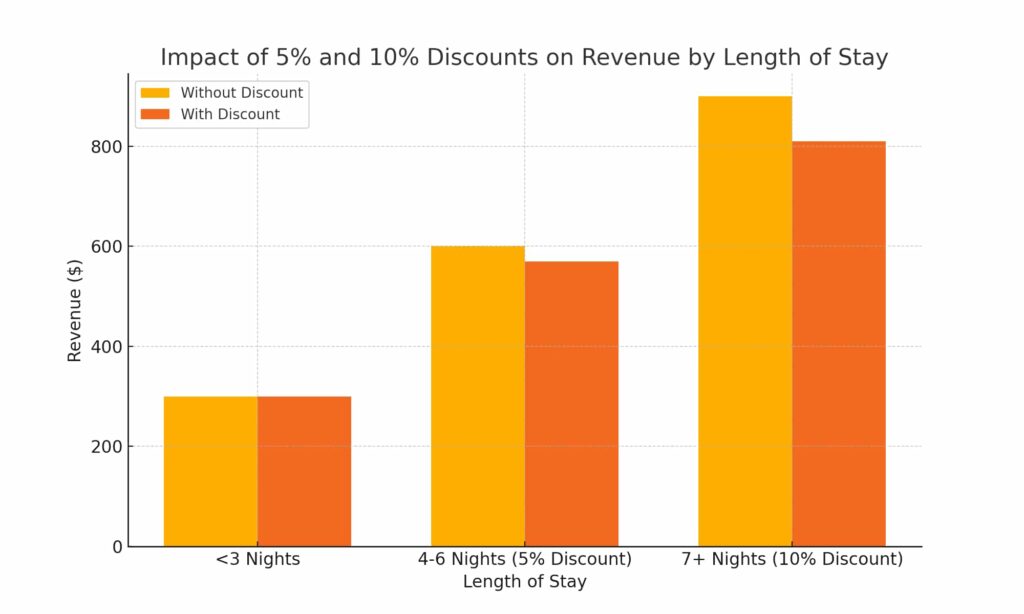
Conclusion:
Smart pricing is the secret sauce to maximizing your Airbnb profits. By applying strategies like seasonal adjustments, gap discounts, and event-based pricing, you can attract more bookings and boost your revenue. The key is staying competitive while offering value that guests can’t resist.
To take it a step further, use a hotel API provider like MakCorps. to analyze hotel pricing trends in your area. With real-time data, you can set competitive rates that stand out while staying ahead of the competition.
So, don’t leave money on the table. Start experimenting with these strategies today, optimize your pricing, and watch your bookings soar!

